[Matyi]: We’re lucky to have some amazing contributors to the site who are willing to share their images and stories.. This post is a wrap up of Ferdinand’s recent trip to J-land, and while not strictly car-oriented, is still great viewing, and has certainly made me want to return to Japan sometime soon.
[Ferdinand]: So every once in a while, Jetstar has insanely cheap tickets to Japan departing Gold Coast Airport. Having been a while since my last journey to the land of the Rising Sun, I thought I would jump on board this opportunity.
Arriving at Narita International Airport, I took the Kesei Skyliner into Tokyo and checked into my hostel. Having completed a 9 hour flight, I was starving, so went down to the local 7-Eleven, one of many convenience stores that are open well past midnight.
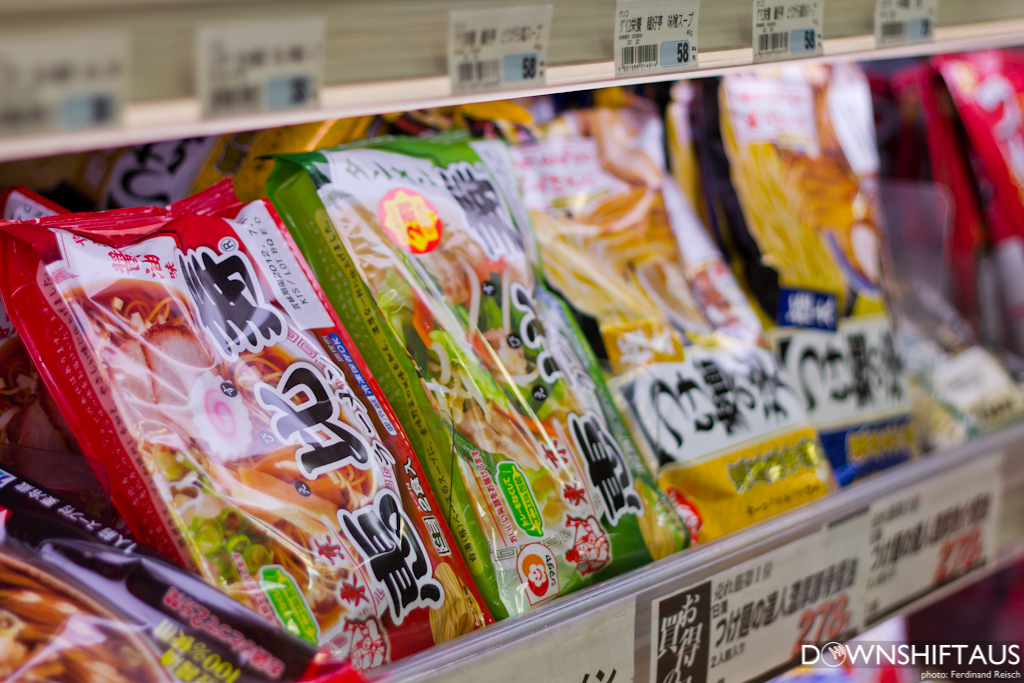
The next morning, I took the JR Highway Bus to where I would be spending the majority of my trip, Kawaguchiko, a small town at the base of Mt Fuji. Taking the highway bus was a great experience, covering a large distance while still being able to enjoy the scenery and some car spotting. Minis are insanely popular in Japan, all through my trip I saw them and even workshops dedicated to them.
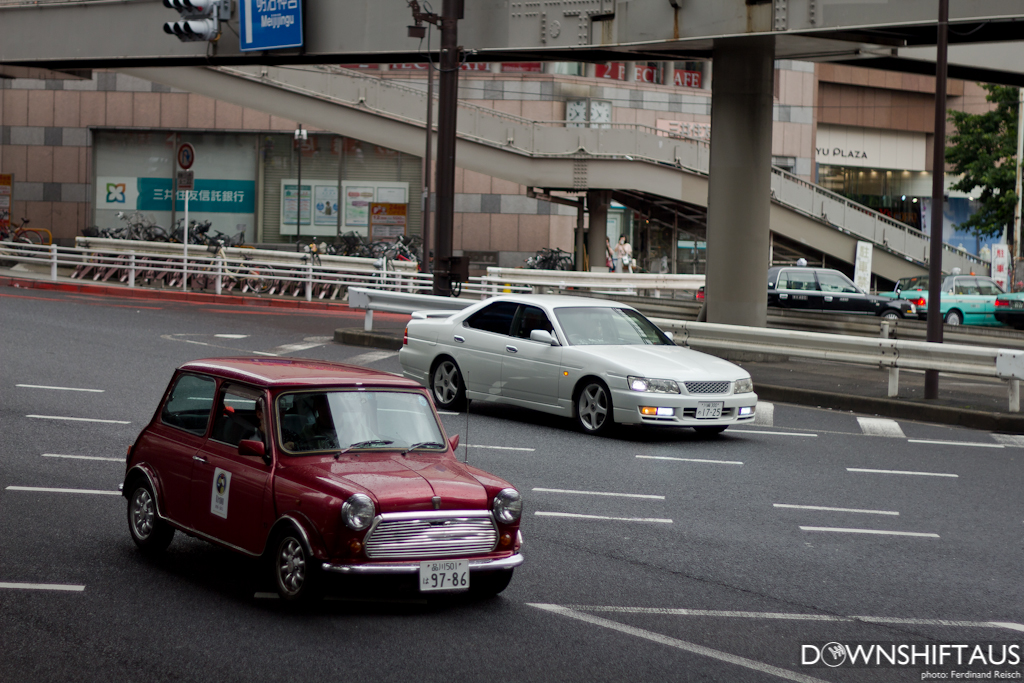

These gentlemen in green are parking officers. No wonder everyone mentions parking in Japan is expensive, these men take their job seriously!
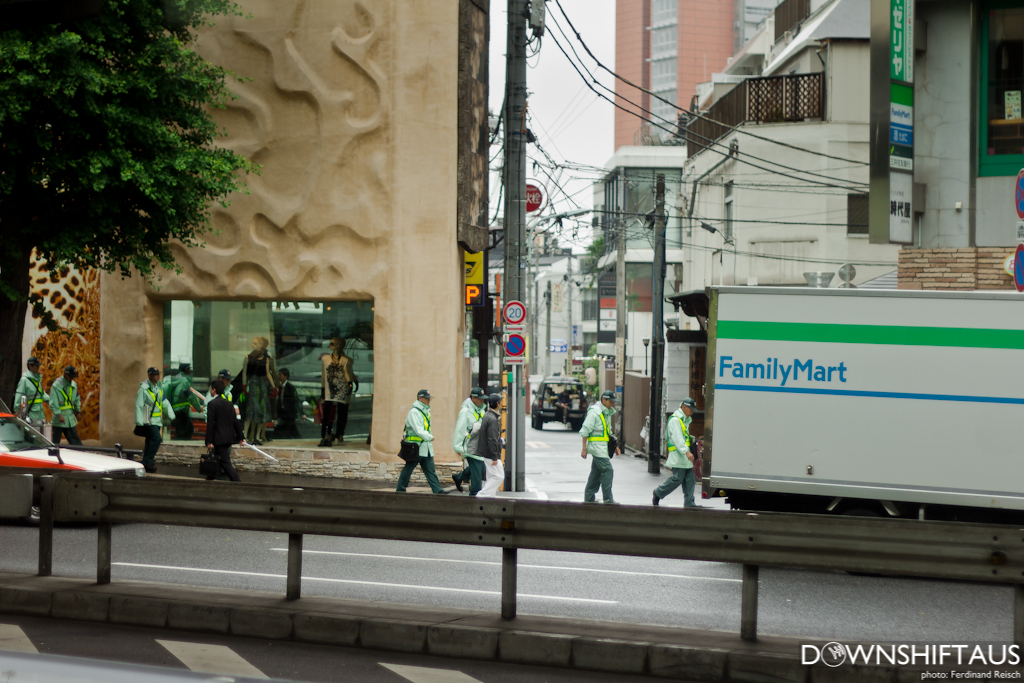
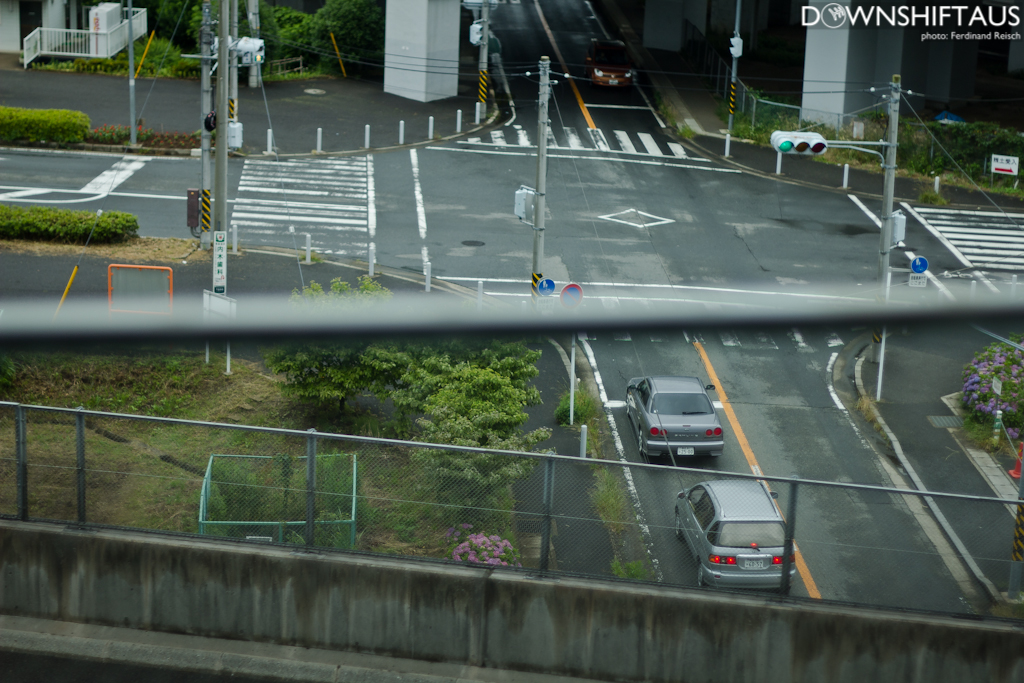
After approximately two hours of driving, we pulled off the highway and into a rest area, however nothing like what we have here in Australia. These areas are only accessible from the highway and contain huge car parks and stores to cater to drivers’ every need to unwind. Im sure many car meets would be held at these locations.
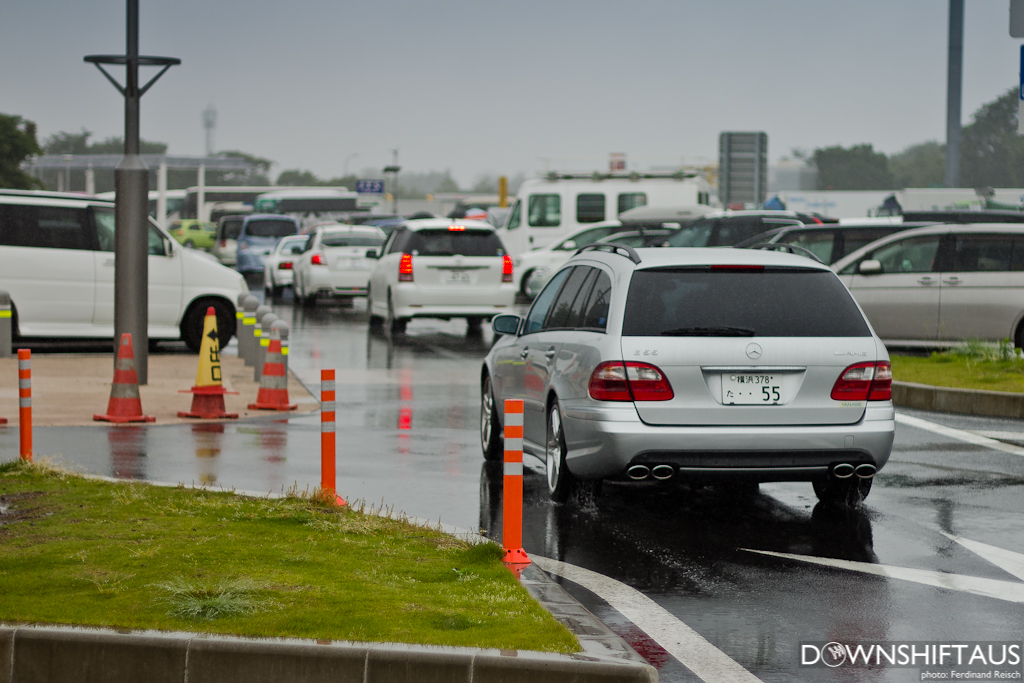
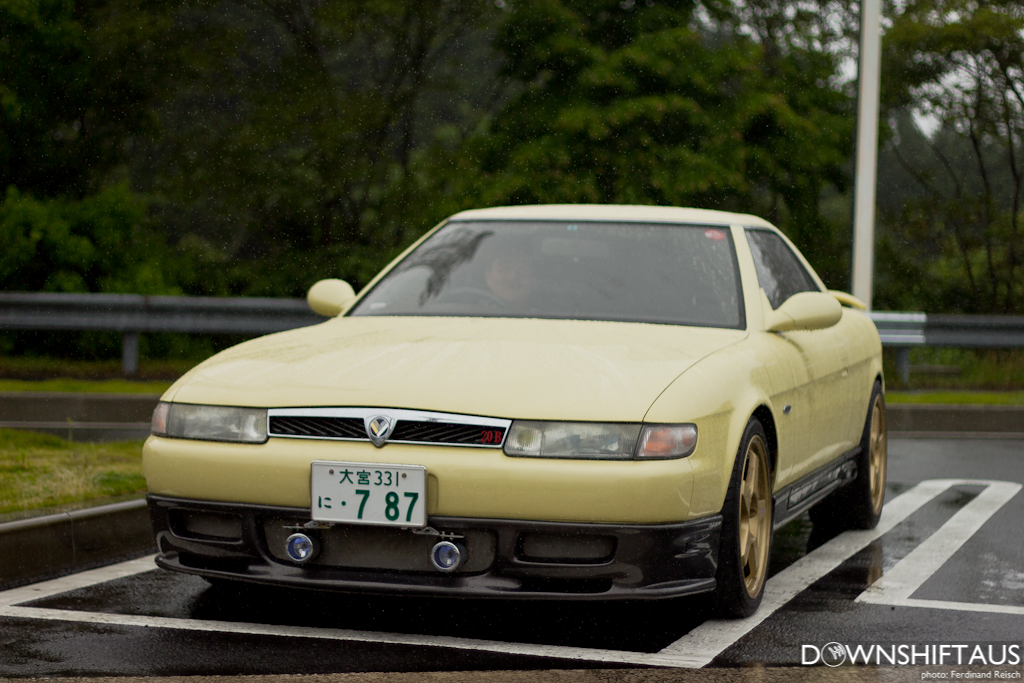
One of the Takahashi brothers?
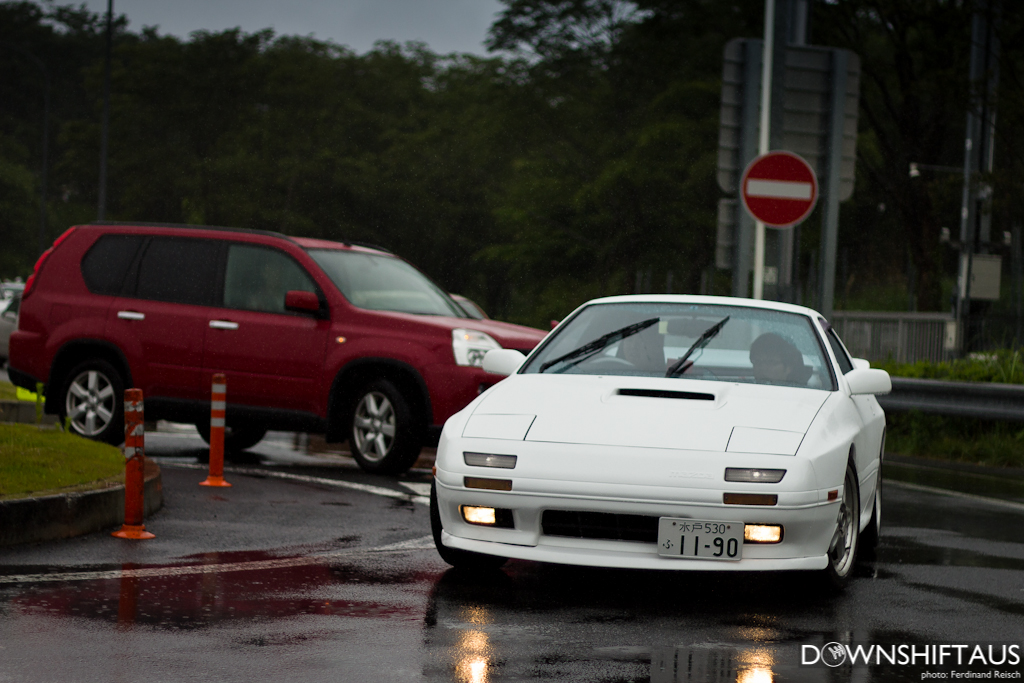
The hostel I was staying at was only a short walk from the Kawaguchiko station, however on the opposite side of the road there was this small workshop.
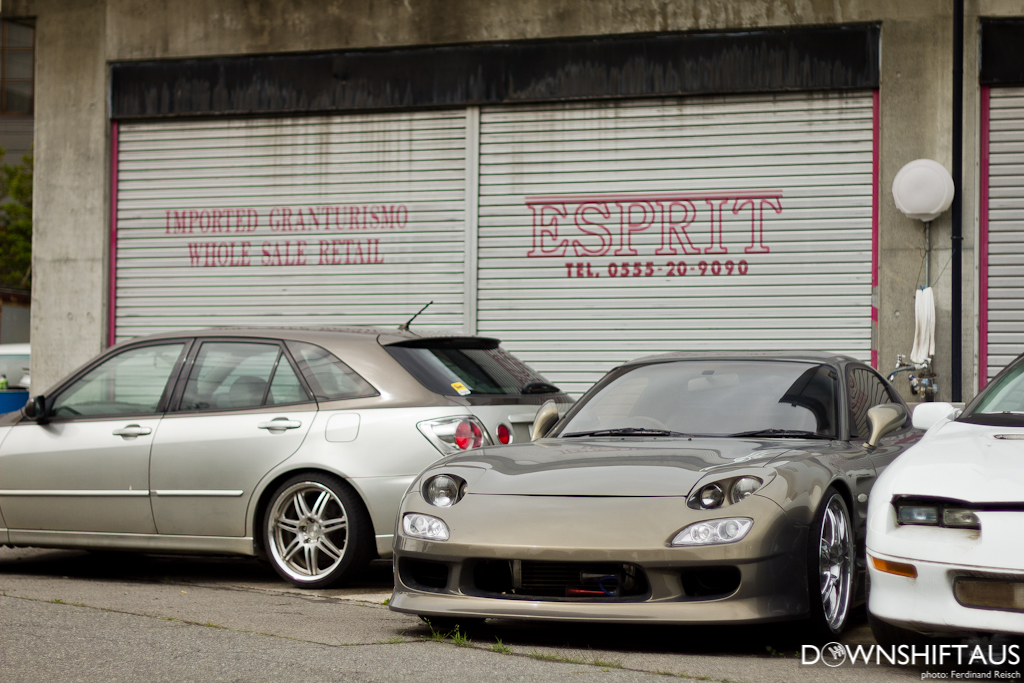
This site got me really excited, as I figured this could be my entry ticket to seeing some of the legendary touge runs that we all dream about in Japan. Unfortunately, after proceeding to ask the workshop owner if he was aware of any local “hashiriya” (street racing) or touge runs, he concluded that most of his clients did track work and that he was unaware of any local action. While the Japanese are very friendly, I believe he didn’t want to spill his secret locations to “gaijin” (foreigners).
Later that day I went for a bike ride around the surrounding lakes to explore the area.

Being on the bike was a bit depressing at times, with roads like these…
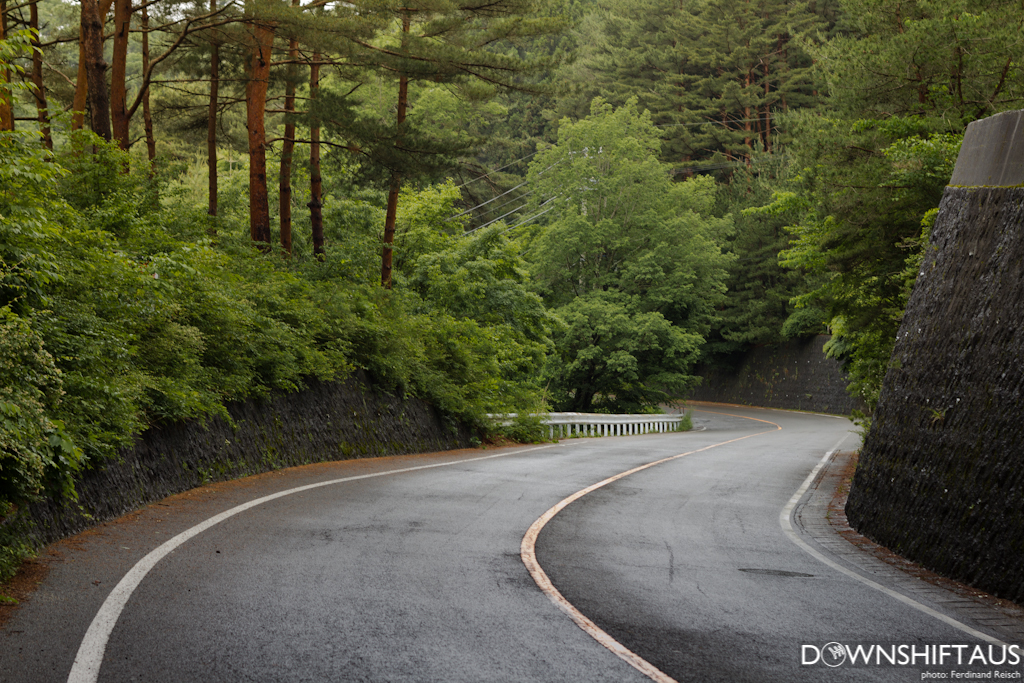
An interesting observation: in the corners on the mountain roads, the roads have an additional rubber-like material, which provides extra friction and therefore a higher grip level in wet or cold conditions. Figure the Japanese to have the best for their roads…
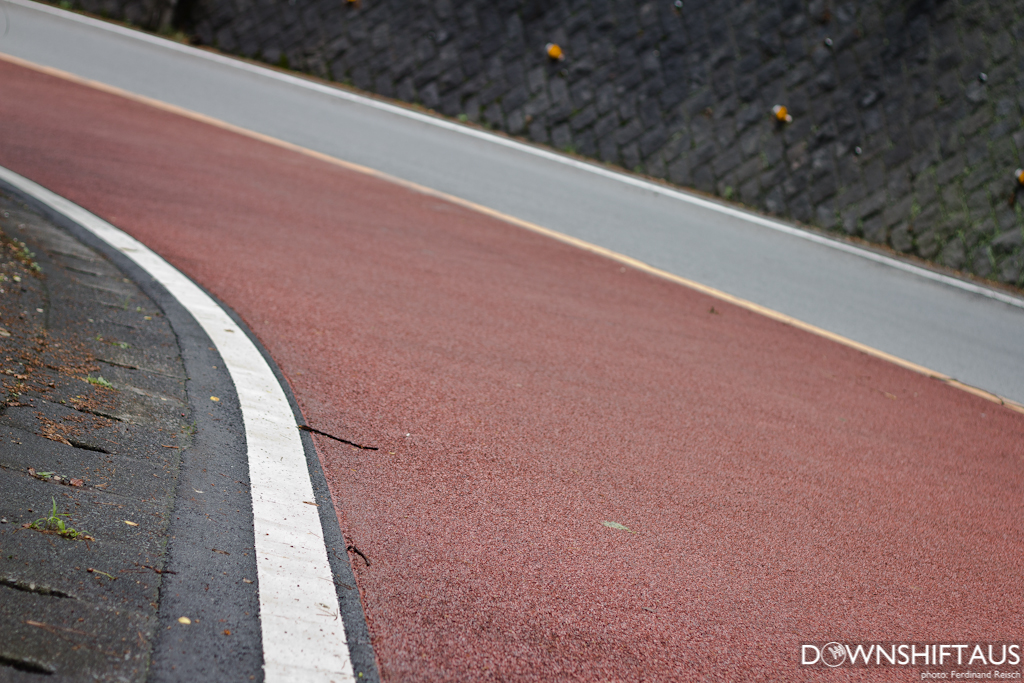
Yet another Mini…

Arriving at Lake Saiko, I was presented with an amazing view of Mt Fuji. If you haven’t seen it in person, I strongly recommend you do. Seeing something of its size and height is almost overwhelming.

After a full day of riding, I was both exhausted and hungry for some local Japanese cuisine. In Kawaguchiko, the local dish is Houtou; thick noodles presented in a stew of potato, pork, pumpkin, carrot and an assortment of many unique Japanese spices.
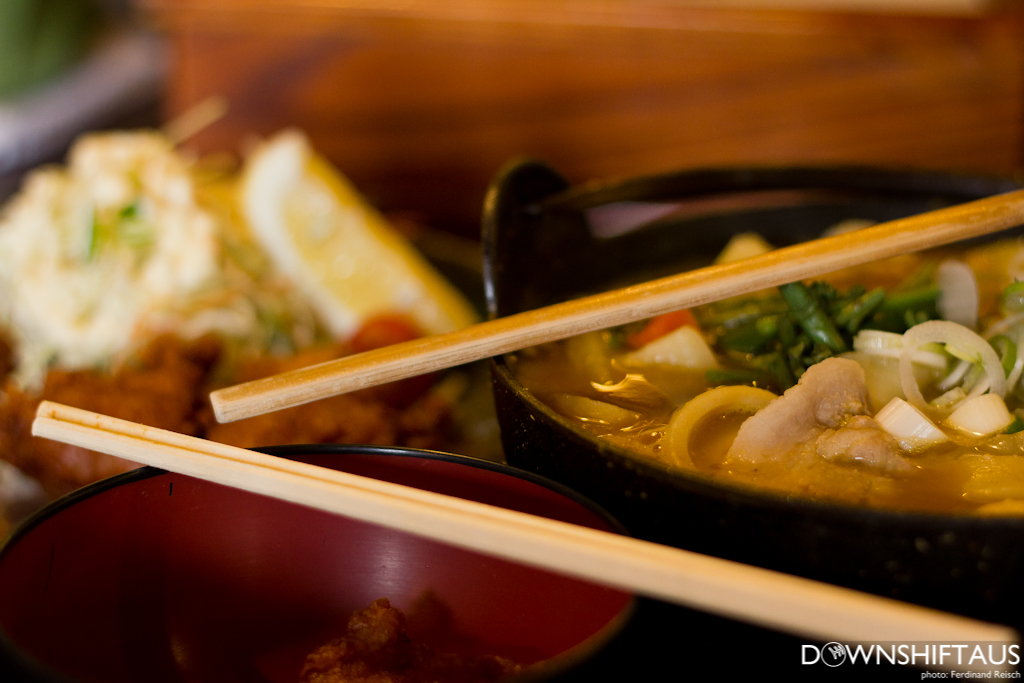
Being quite ignorant with proportions, I ordered a large bowl and a side dish of Karaage (deep fried chicken). That was mistake #1. Mistake #2 was that after such a hardy meal, I did not want to return to the hostel.
The following day myself and an American also on holidays, decided to hike to one of the smaller surrounding mountains, of only 1786m in altitude and hope to gain an impressive view of Mt Fuji. We kind of cheated on the way up and took the local cable car.
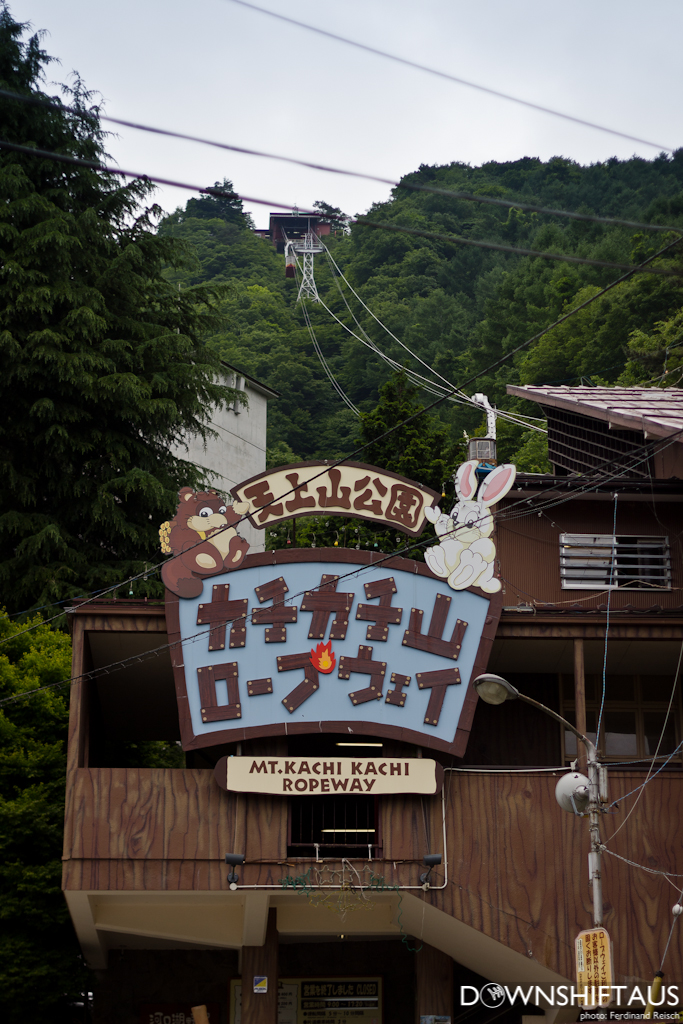
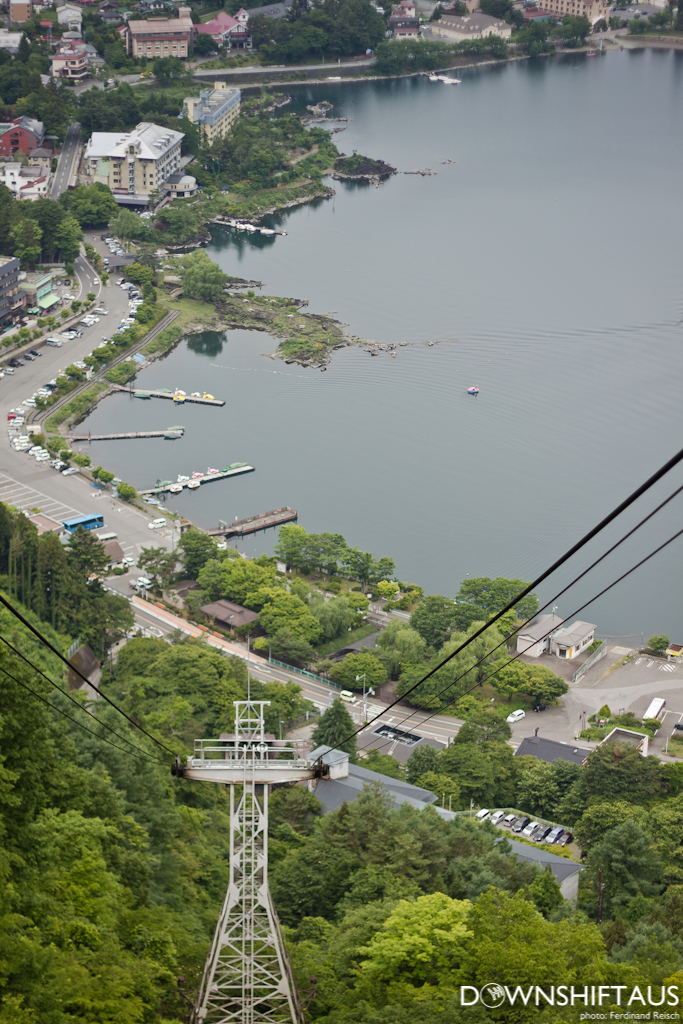
Once at the top of Mt Kachi Kachi, the view that greeted us was unforgettable.
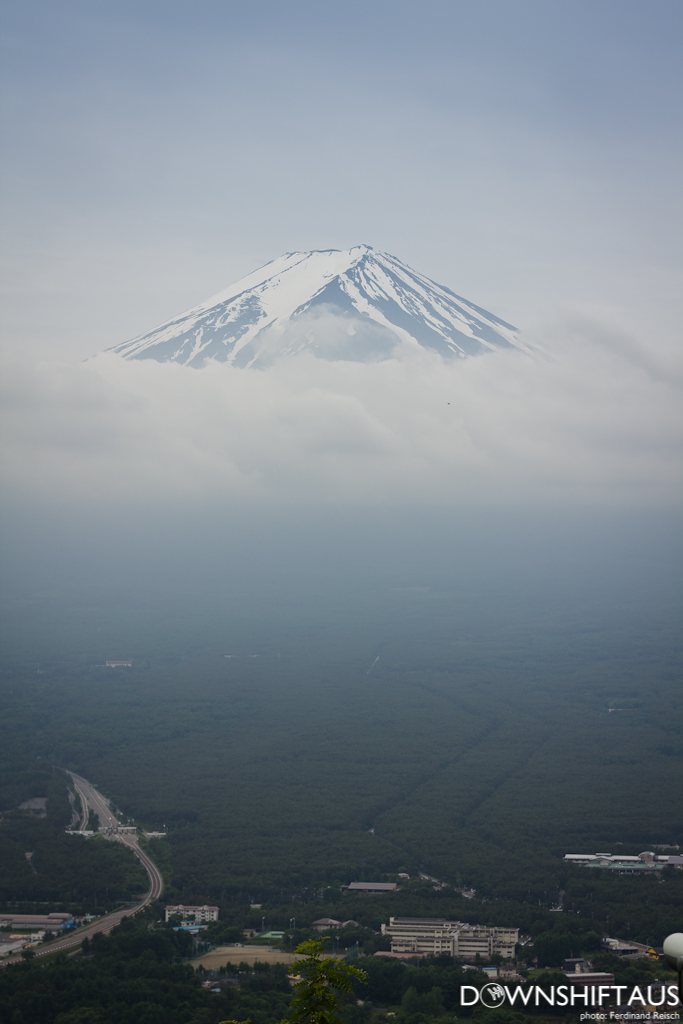
Being a relatively clear day in the rainy season, a photo stand was set up for tourists to have their memory of Mt Fuji immortalised. Being Japanese, odd creatures and figures were quite standard.
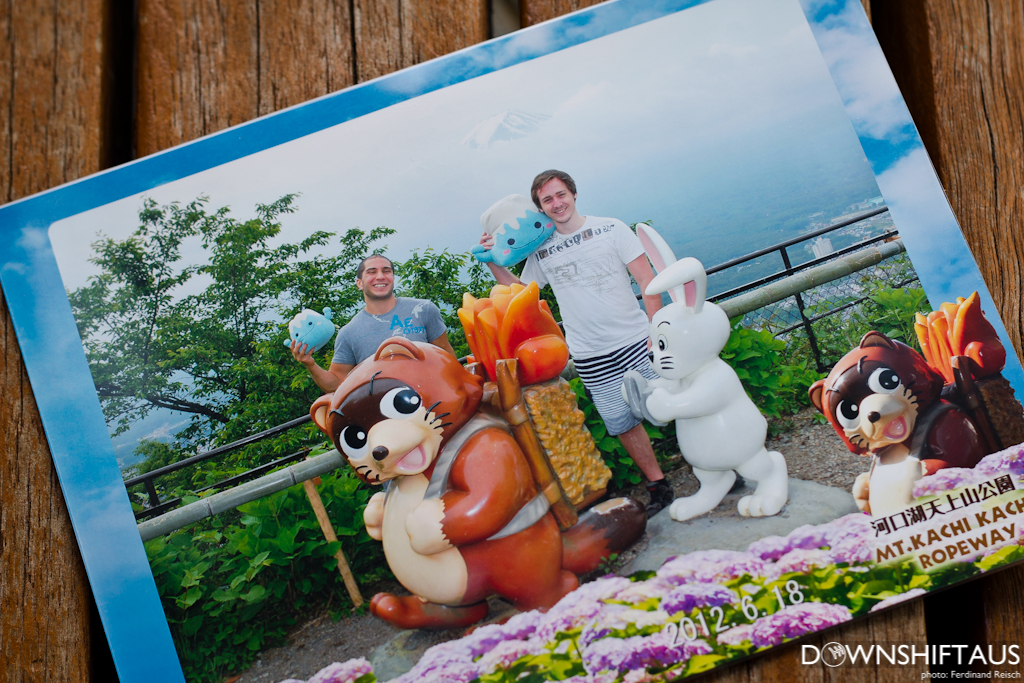
On the hike back down, we stumbled upon this single direction road to the top of the mountain… At this stage, I would have been happy to ride even a scooter along these roads!
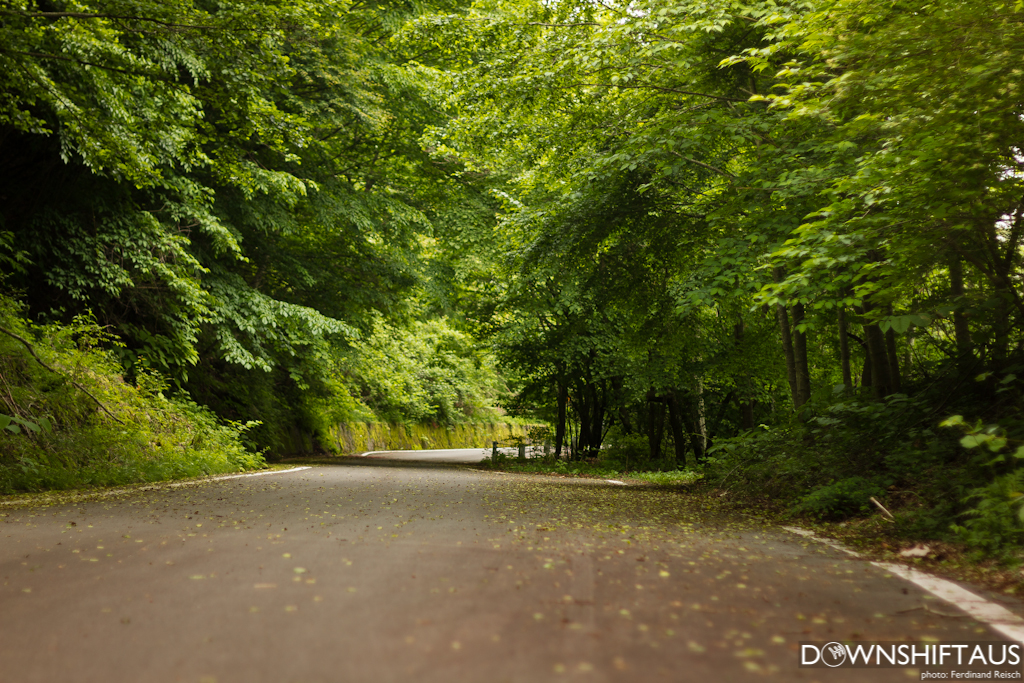
After a good day’s hike, we indulged ourselves at the local Ramen shop. Just something simple, but it can’t be beaten.
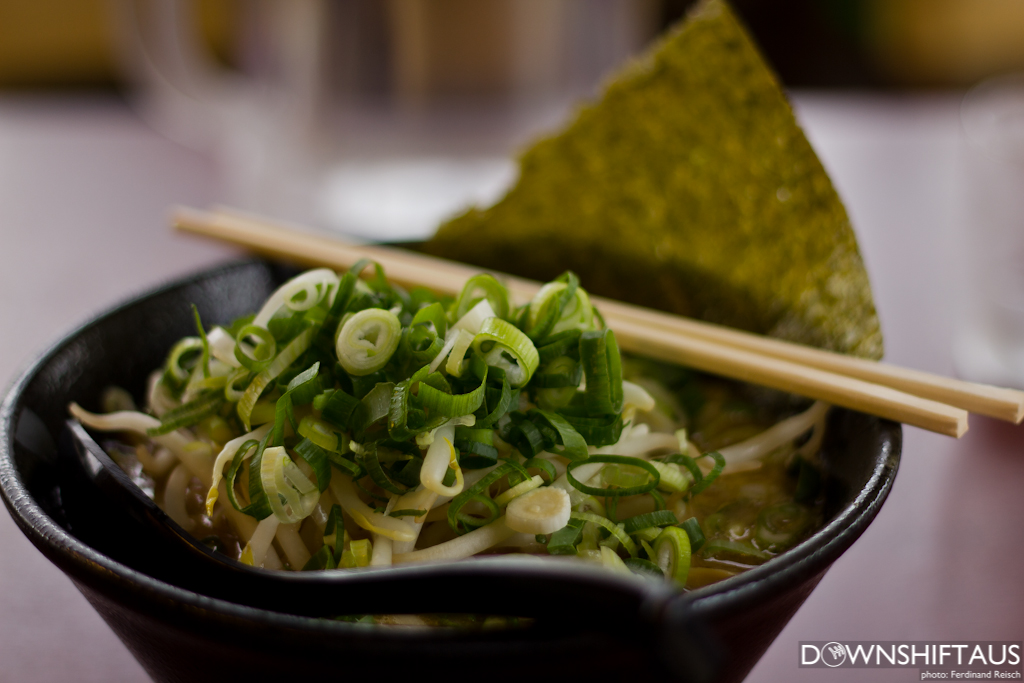
Later that afternoon, it started pouring down and it had been reported that the following day, the first of two typhoons would hit Japan. So the next day was spent chatting with a couple of the other travelers and hearing their advantages and experiences with Japan on their stay.
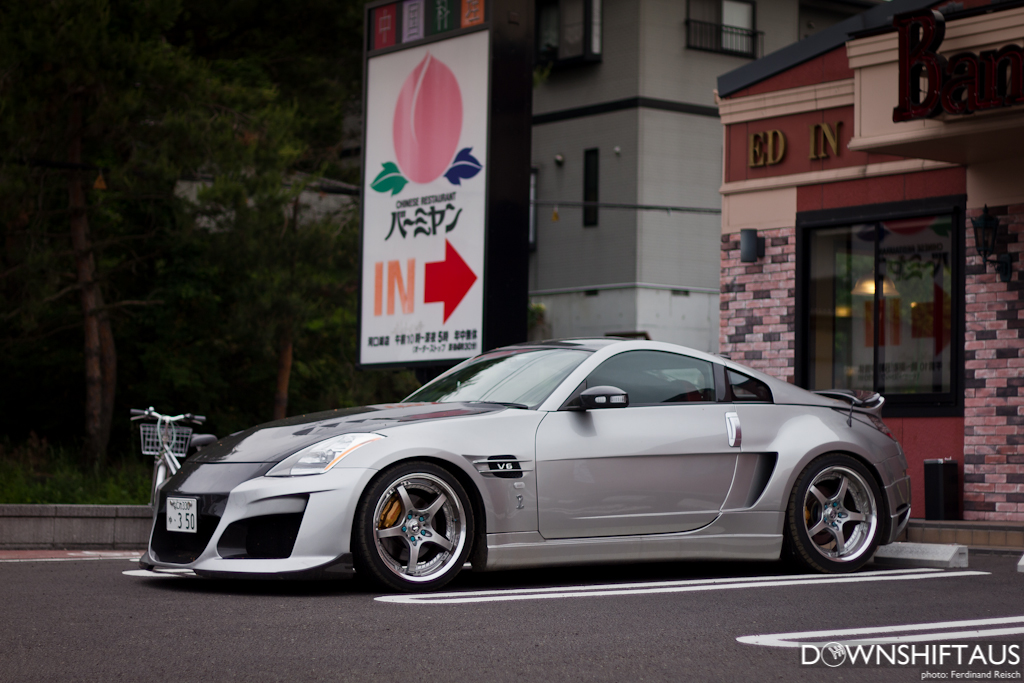
My ultimate plan for the trip was to set foot on Mount Fuji, and see how far to the top I could get. While the weather had calmed down quite a lot after the typhoon had hit, the wind speeds at the summit of Fuji were still being reported at over 100km/h and as Im not an experienced climber, I figured it would be best to wait for the day after when the winds had subsided. So instead, I decided to head to the Fuji Q Highlands theme park. Only a short trip from Kawaguchiko and considering the weather was clear, it was well worth being outdoors again.
Wanting to compare the rollercoasters of Japan to Australia, I hit up Fuji-yama, the tallest rollercoaster in all of Japan.
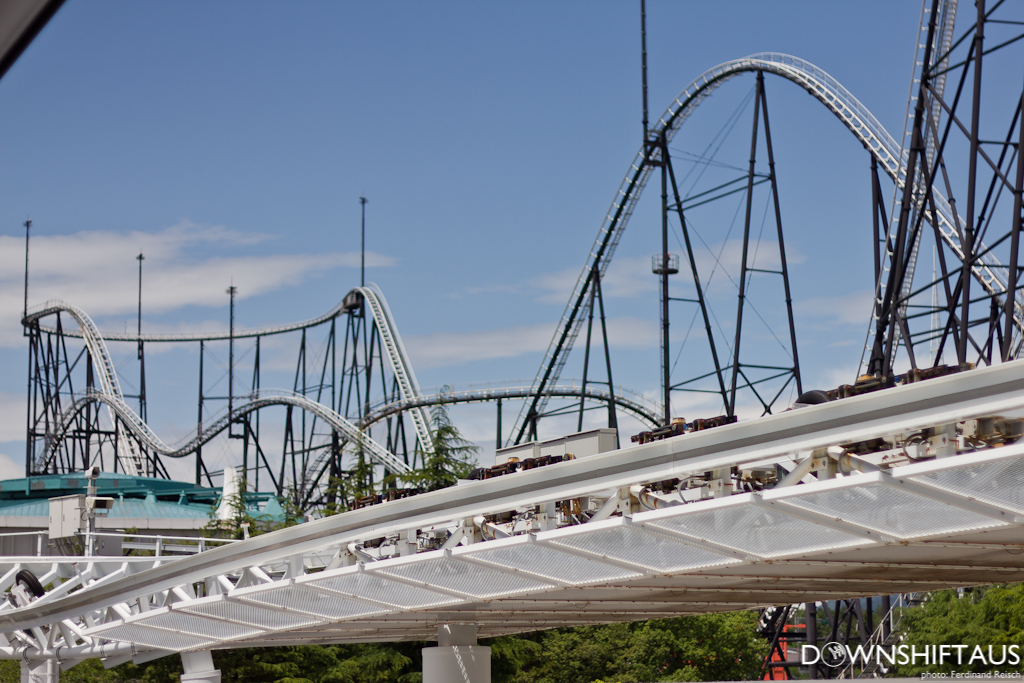
The outcome was better than expected. Having gone on the ride several more times, I was informed that it wasnt a busy day so I could just skip the queue, interesting, when the line was still 1 hour long.
Enjoying pure acceleration, I couldnt pass up a chance to go on the legendary “Dodonpa”. This 11 year old ride accelerates the riders from a standstill to a top speed of 172kph in 1.8 seconds… quite depressing to think the highest acceleration G I’ve experience was in a roadster.
Instant Super Saiyan?

The Claw but upside down?
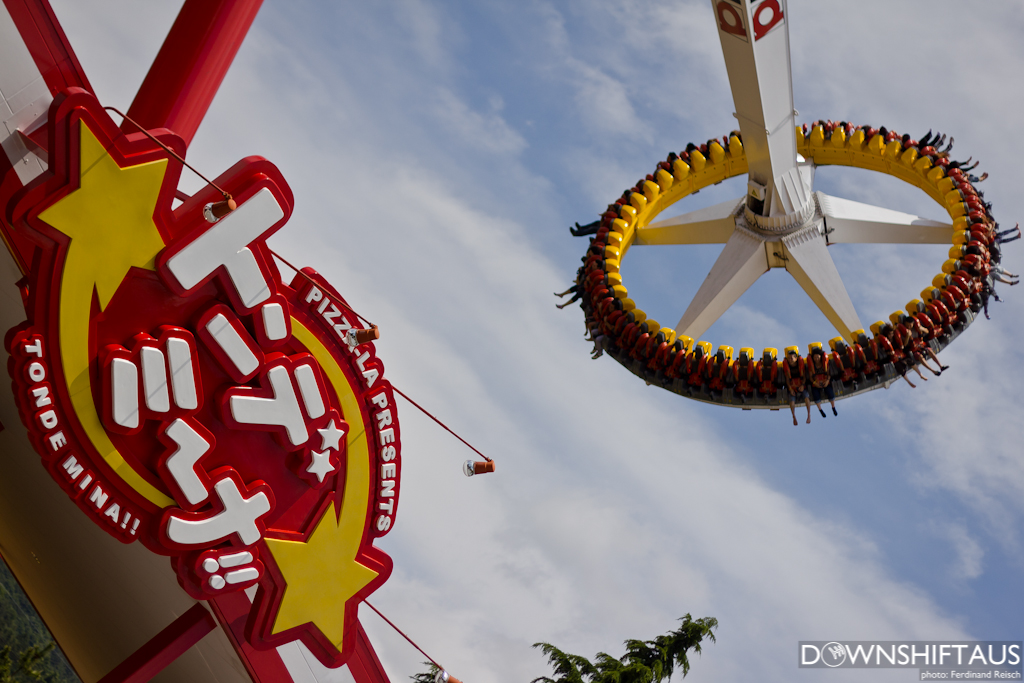
To finish off the day, I explored the “Evangelion World”. Being a serious fan of anime, I knew what awaited me inside would not disappoint.
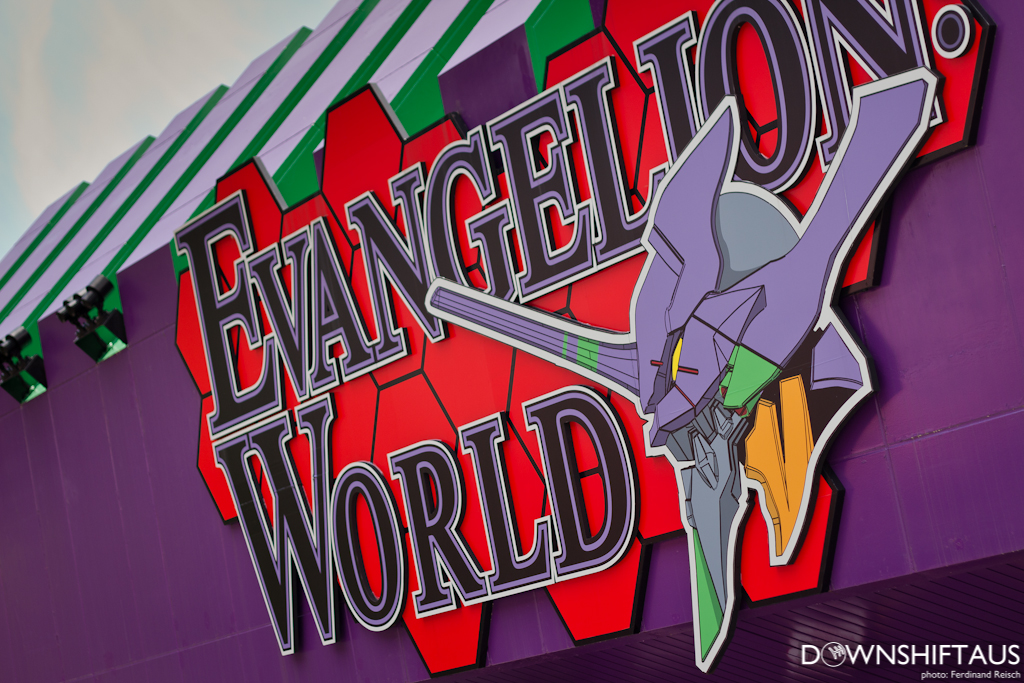
You progress through series of different rooms and chambers all containing different aspects of anime.
Life-size EVA 1
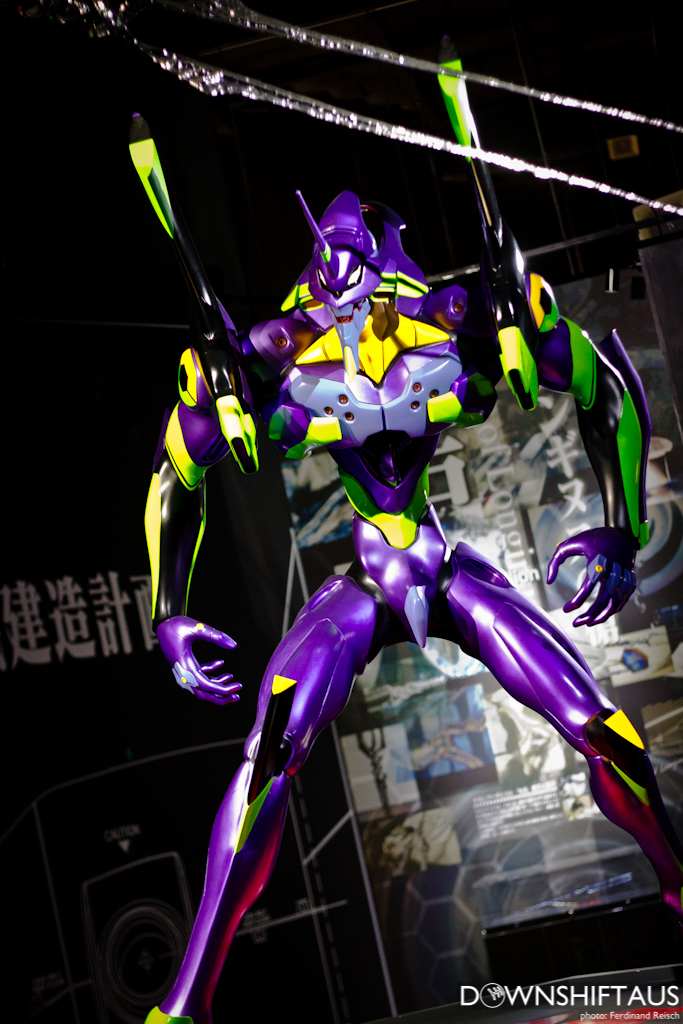

Walking into a completely dark room, not knowing what to expect…
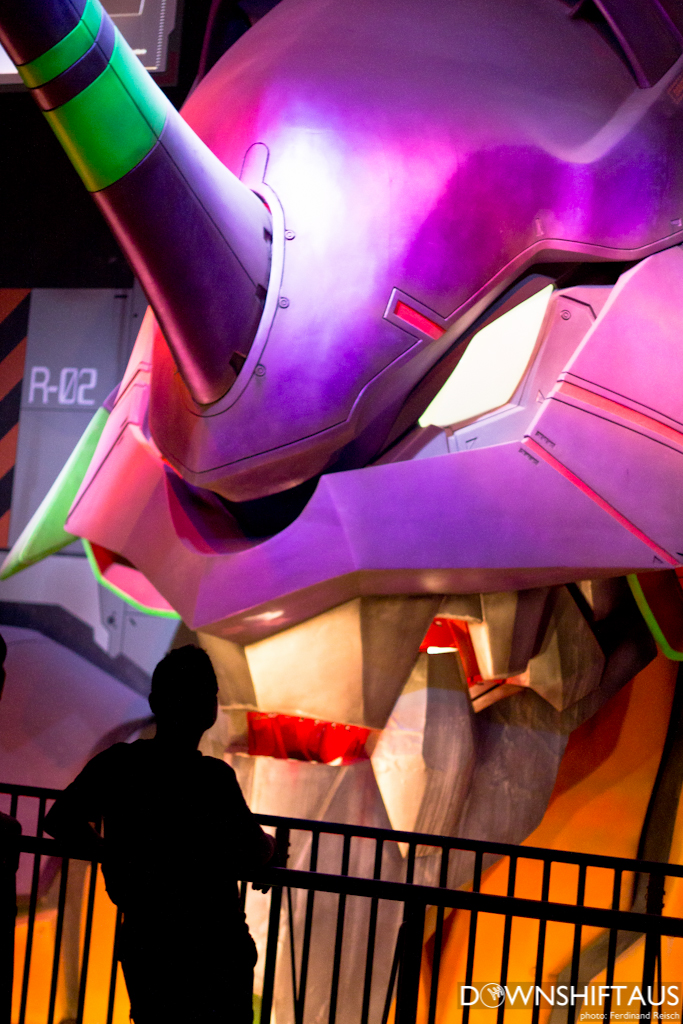
… but when the lights came on, a 1:1 scale EVA 1 head was presented on the wall. The display continued by reenacting the scene where the EVA loses control and goes on a rampage, with steam pouring out of its month and its eyes being illuminated in shades of red. This experience gave me goose bumps!

Returning back the the hostel after an interesting and exciting day out, I ran into a Canadian and a Californian, who were both also looking at climbing Mt Fuji on the next day.
The biggest problem with climbing Mt Fuji outside of the climbing season (July – August), aside from the terrible weather and layers of snow and ice, is that public transport is very limited, giving the average traveler only a 5 hour window between first and last buses. This meant arriving at the 5th station (~2300m altitude), climbing to the 8th Station (~3100m) and returning, unless you are an experienced and fit climber/hiker, which I am not.
The boys and myself ended up booking a taxi for 3am in the morning for 15,000 YEN (~180 AUD). This worked out to be the best option, as we would be given plenty of time to progress up the mountain, to descend for a suitable bus return.

The taxi ride was quite interesting as we exchanged hiking stories, whereby I found out, the other two had been very modest about their own experience.
Now you know about audible lines, like those on the way to/from the Sunshine Coast in QLD? Well the Japanese have done it better yet again. We were all silent in the taxi and the radio was off, however all of a sudden a melody started to play. With my limited Japanese, I asked the taxi driver where the music was coming from. He informed me it was the road and the tyres and they were playing the Fuji-san melody which every Japanese school kid knows.. This got me very excited, and again, fascinated me why we don’t have something like this.
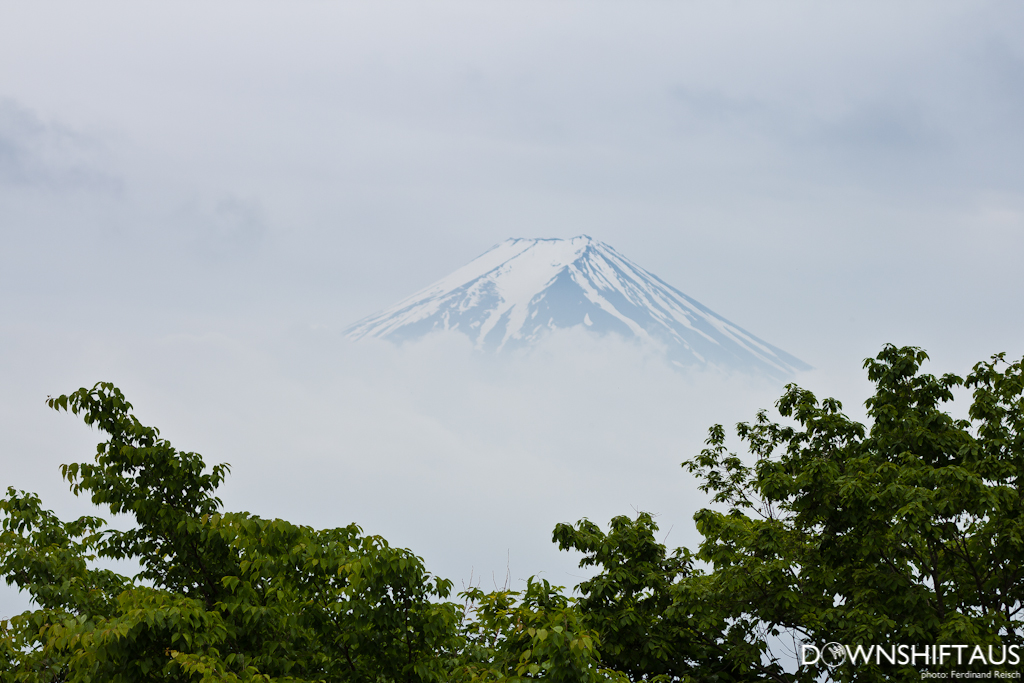
It is strongly advised that any time outside of the climbing season that you bring ice axes and crampons. None of us had these, but I never really set my sights on the summit, my goal being to make it to the 8th station.
Another important suggestion for the climb is to walk around the 5th station for about 30 minutes to become used to the altitude. Being prepared with this knowledge, we started walking around the station when we got out of the taxi at 3:50. This was something that I was going to regret in about 30 minutes when I was out of breath and suggested I continue on my own.
I made it to the 6th station (~2600m) just before dawn broke at 4:20 and realised that even getting to this point in the morning was a great achievement and well worth the overly expensive taxi ride.
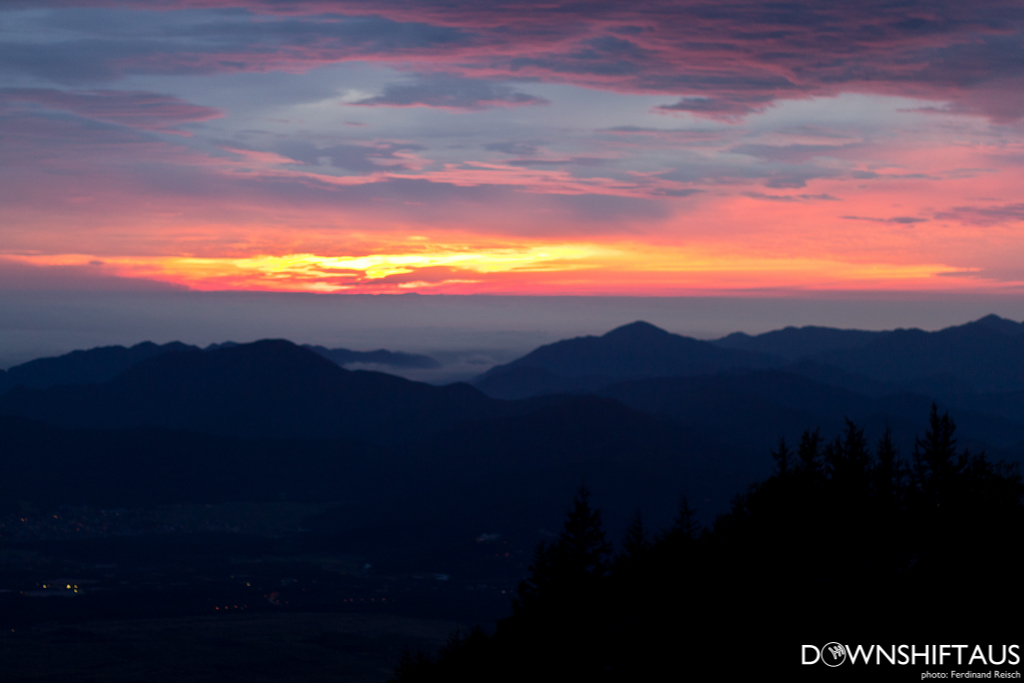
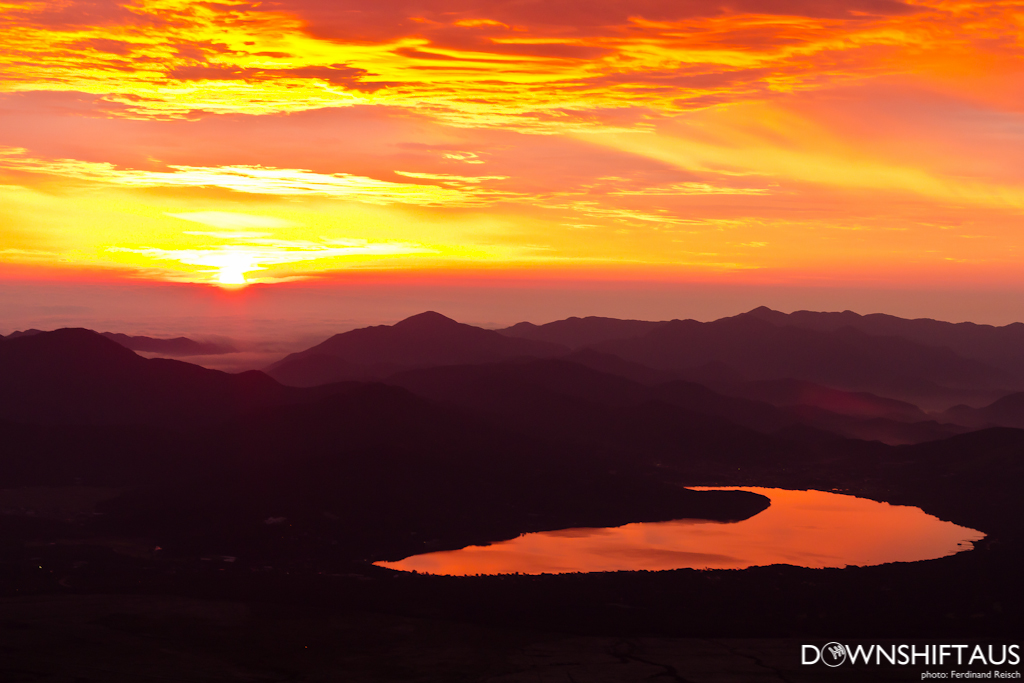
Up to the 6th station, the track was very wide and the ground was very soft and consisted of volcanic ash. However from the 6th station onwards, the track became much thinner and a chain began to assit climbers. The ash turned into volcanic rock, and at many points, I was on my hands and feet.
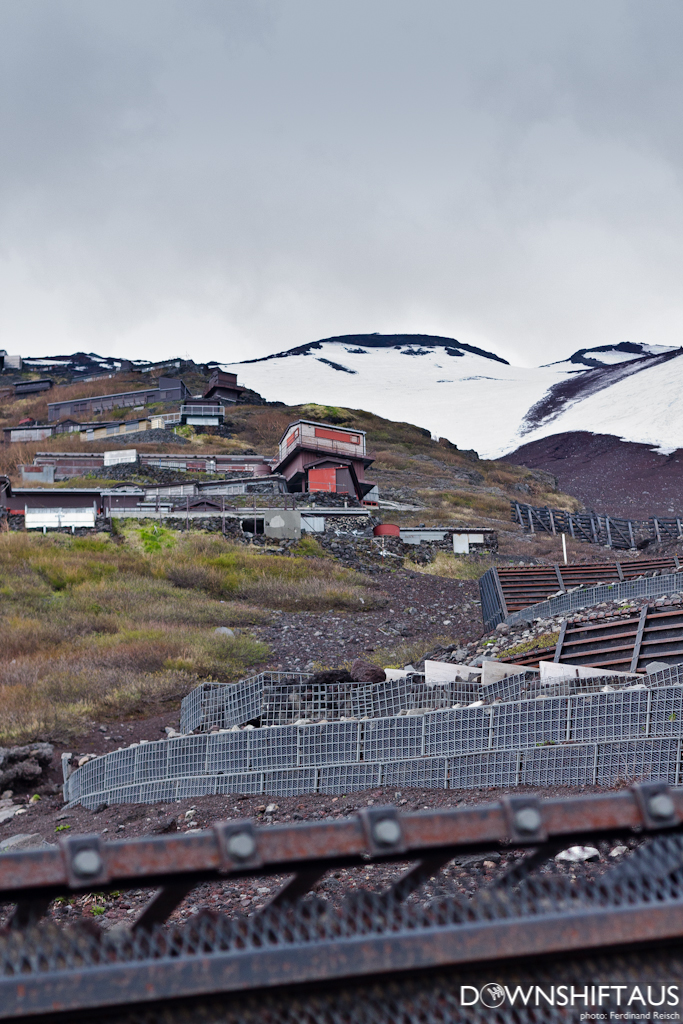
After 3.5 hours of constant climbing, I finally made it to station 8.

At this station, I ran into some other climbers that made it to the summit early in the morning. They advised me that the track was completely covered in ice and that they had to climb off-track to get to the top, something I was not prepared for in any sense. I decided that 3100M was a good milestone and that I would return to make it to the top.
While I didn’t make it all the way to the top of Mt Fuji, I completed the trip safely and without harm and for that I am grateful. You hear far too many horror stories of hikers being blown off and sliding down the mountain.
Returning back to the hostel at around 11am, we all headed straight to the local bar for some well deserved (and very early) drinks.
Approaching my final day in Japan, I went for a last hike to Mt Ryuu (Dragon Mountain). This mountain overlooks Lake Motosu on a clear day, however being the rainy reason I was not blessed with clear views of the surrounding lake or Mt Fuji.
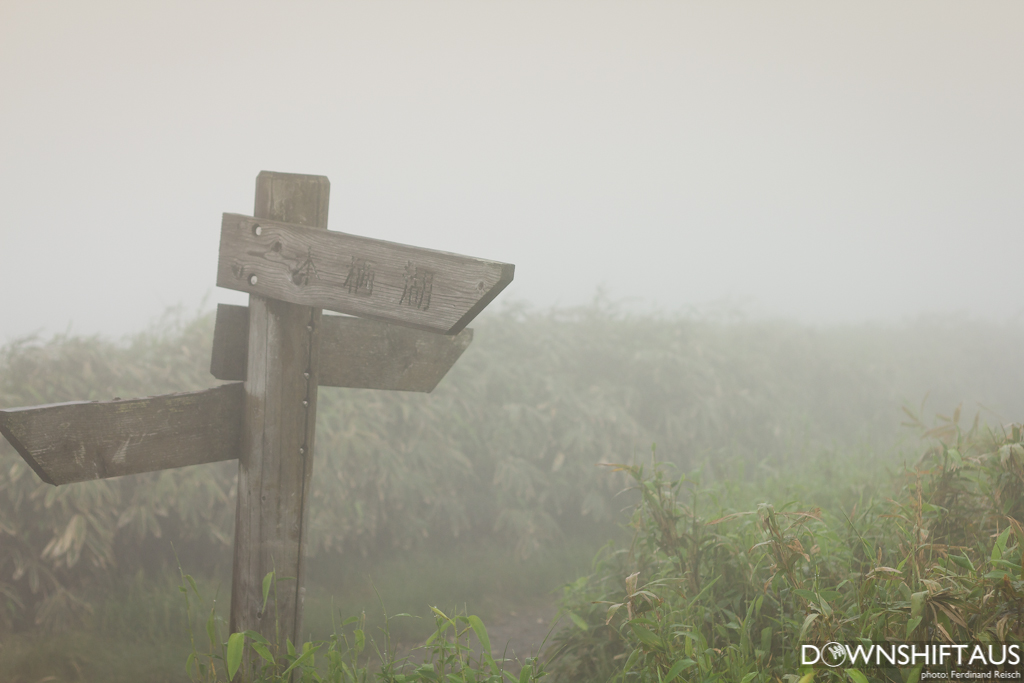
This mountain has an interesting story: Before the latest eruption of Mt Fuji in 1708, there was a single lake at the base of the mountain, said to be the greatest in Japan. After the eruption, the lake was split into 5 different lakes, Motosu, Shoji, Saiko, Kawaguchiko and Yamanakako. Within the original single lake, there lived a dragon. When the lava flowed into the river, he surfaced and rested on the land. His final resting location was next to Lake Motosu or so the story goes.
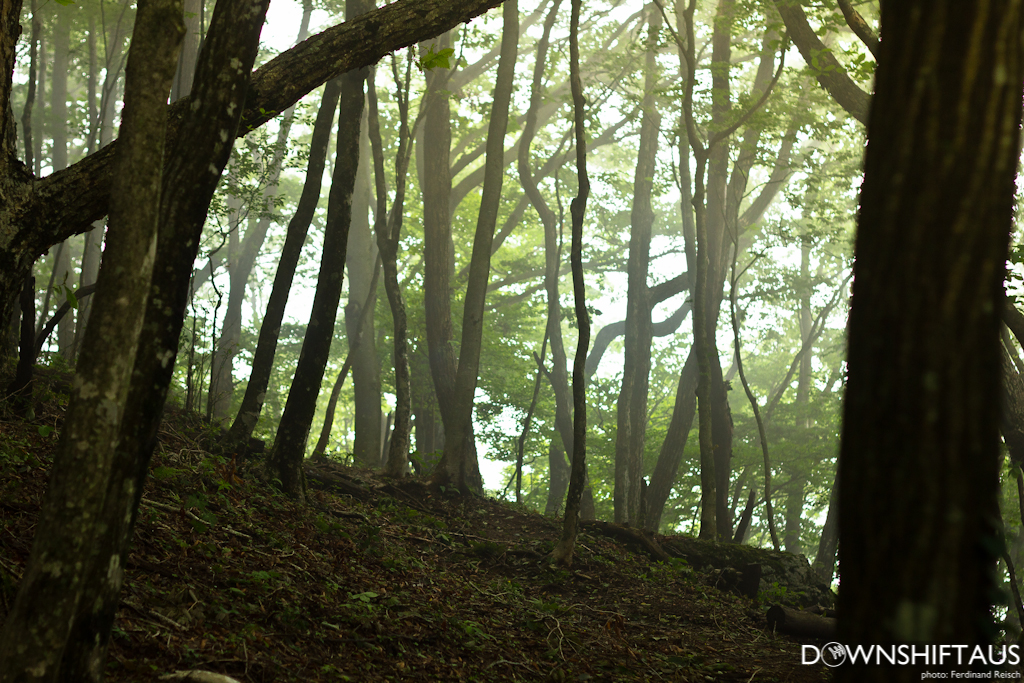
Returning to the hostel for my final night, the staff helped me prepare a traditional Japanese dish, takoyaki.
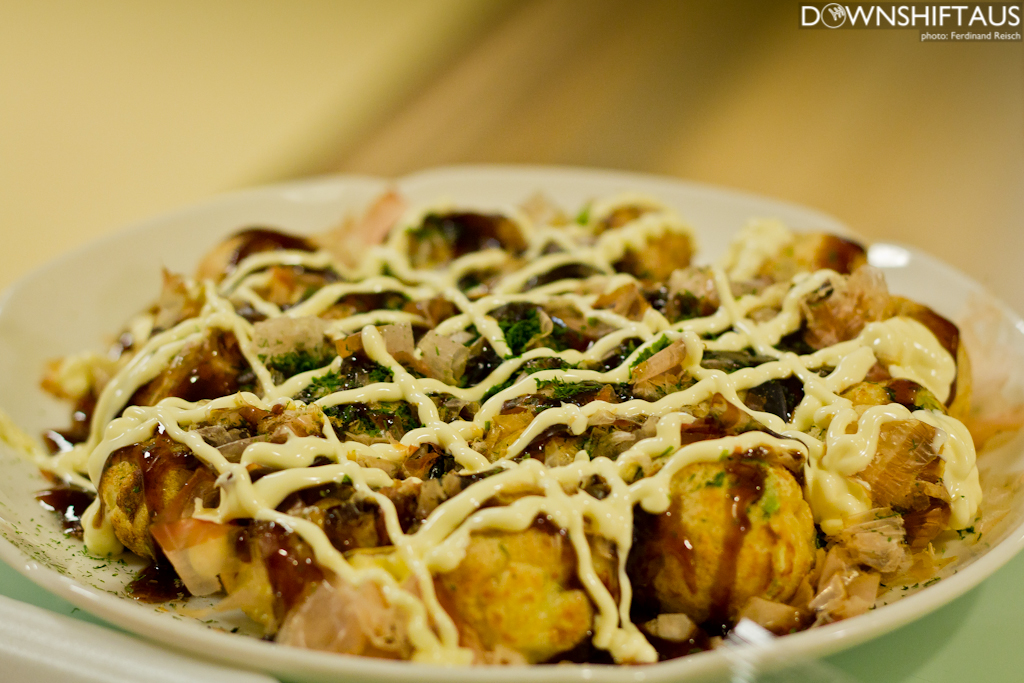
These octopus-filled wheat flour-based batter balls are very common in the streets of Osaka and having tried them before in the past, I figured I’d give it a shot.
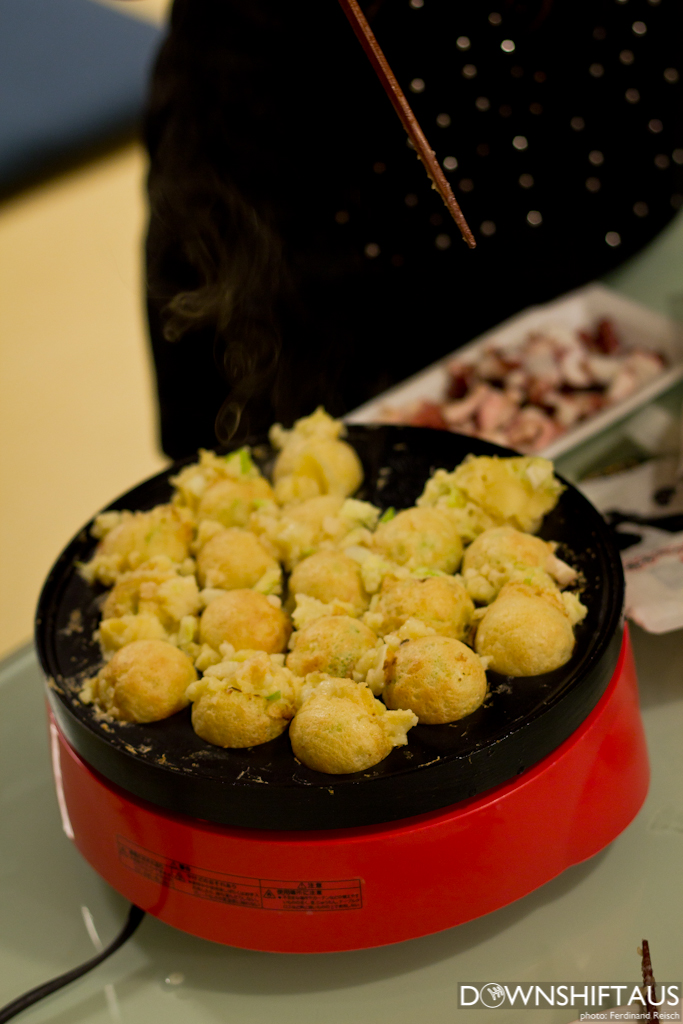
Success!
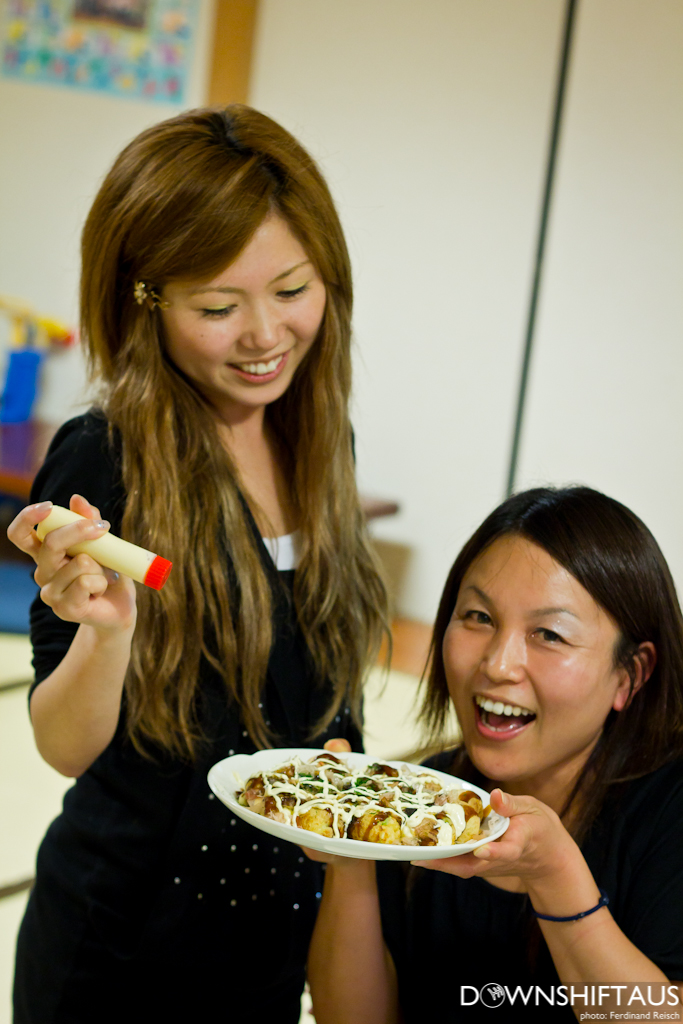
Returning to Tokyo the following morning, before departing later that night, I opted to spend the rest of my time in Akihabara. This is essentially the electronic, nerdy, anime, gaming-oriented area of Tokyo.

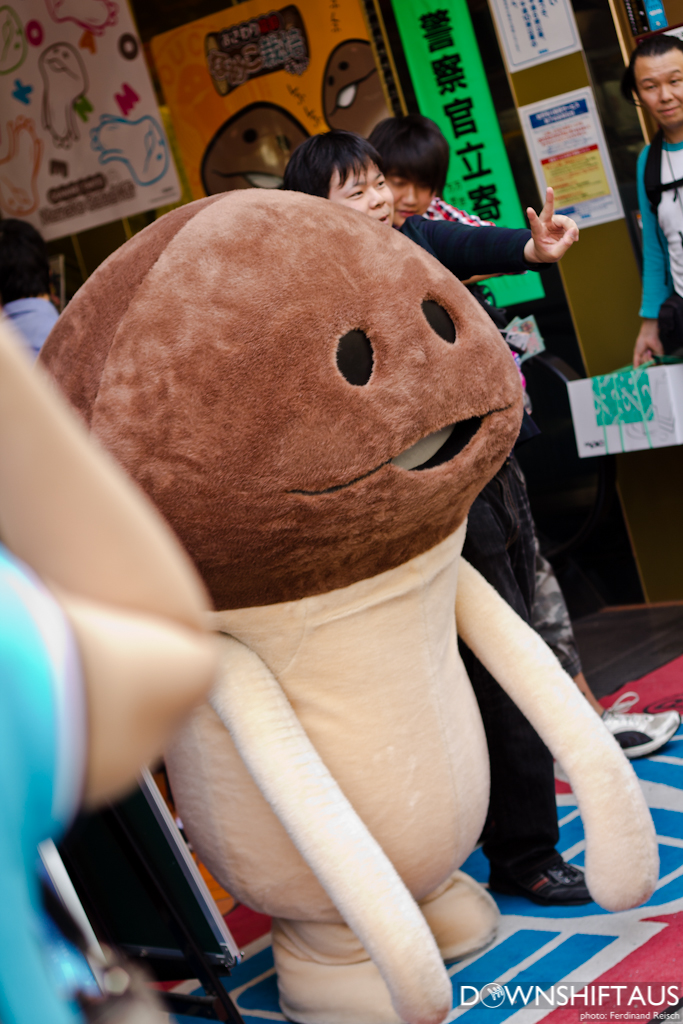
Cosplayers, cafe maids and mascots are all the norm in Akihabara. Unfortunately most of these are guys who have lost some sort of bet, being forced to dress up as female anime characters and picking up litter off the streets.

Luckily for me, it was a Sunday, which meant everyone was out to show off.
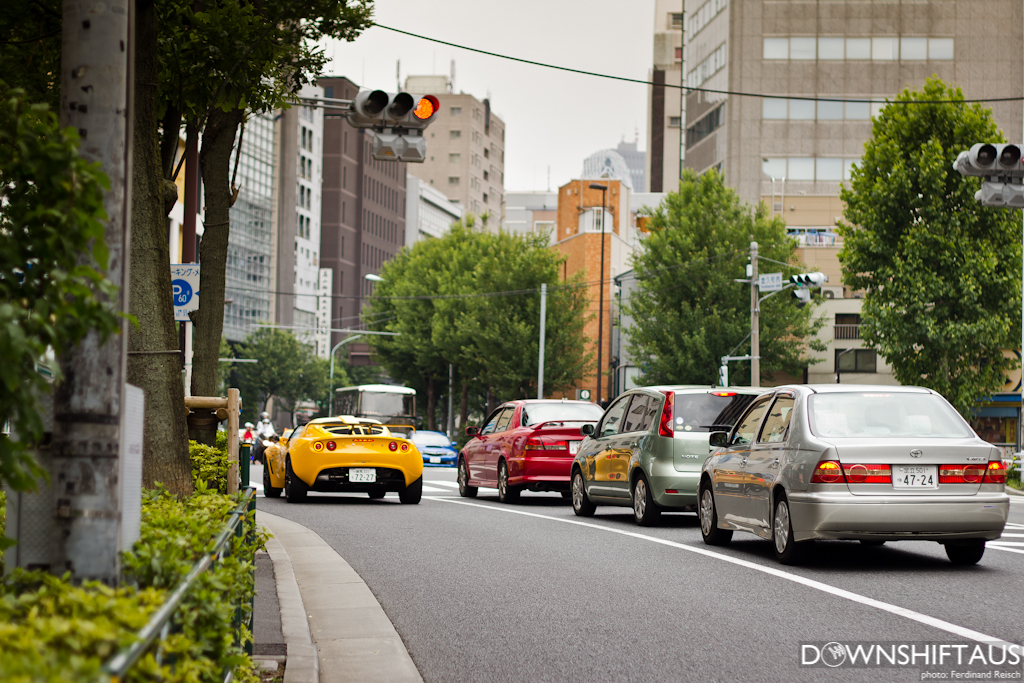
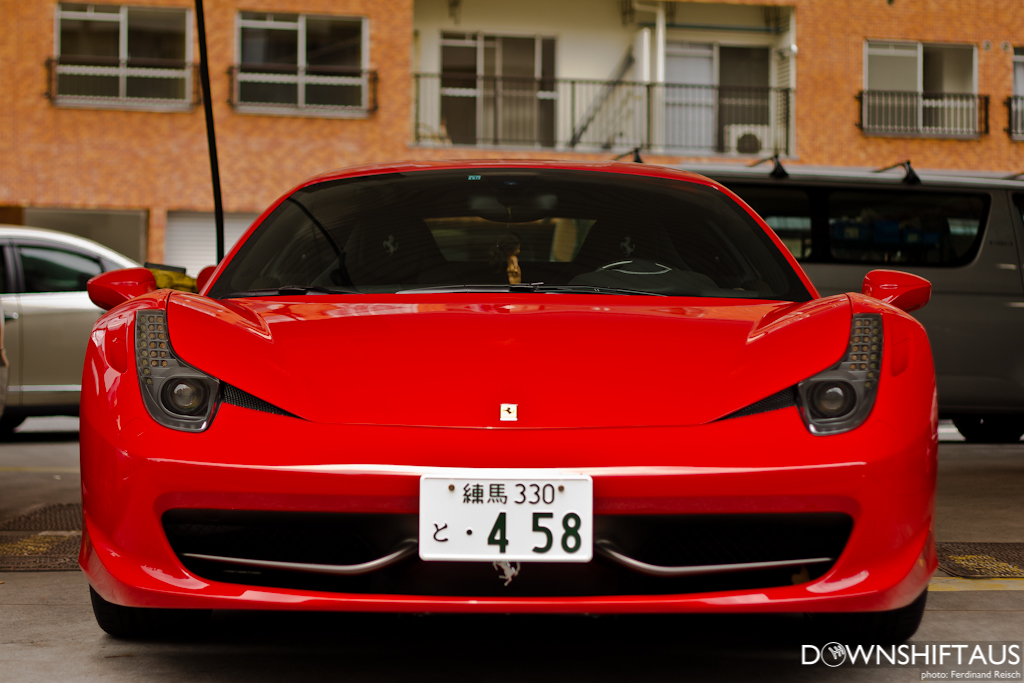
Don’t see many of these. Delta Integrale, however this was the second I spotted in Japan!
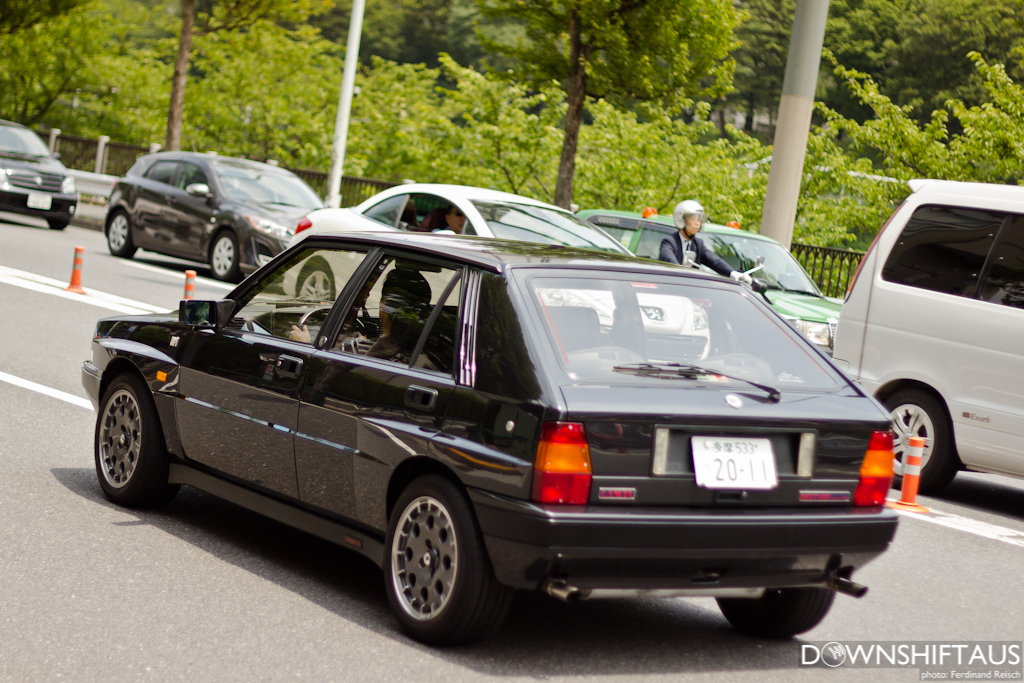
Mmmm V10 goodness.
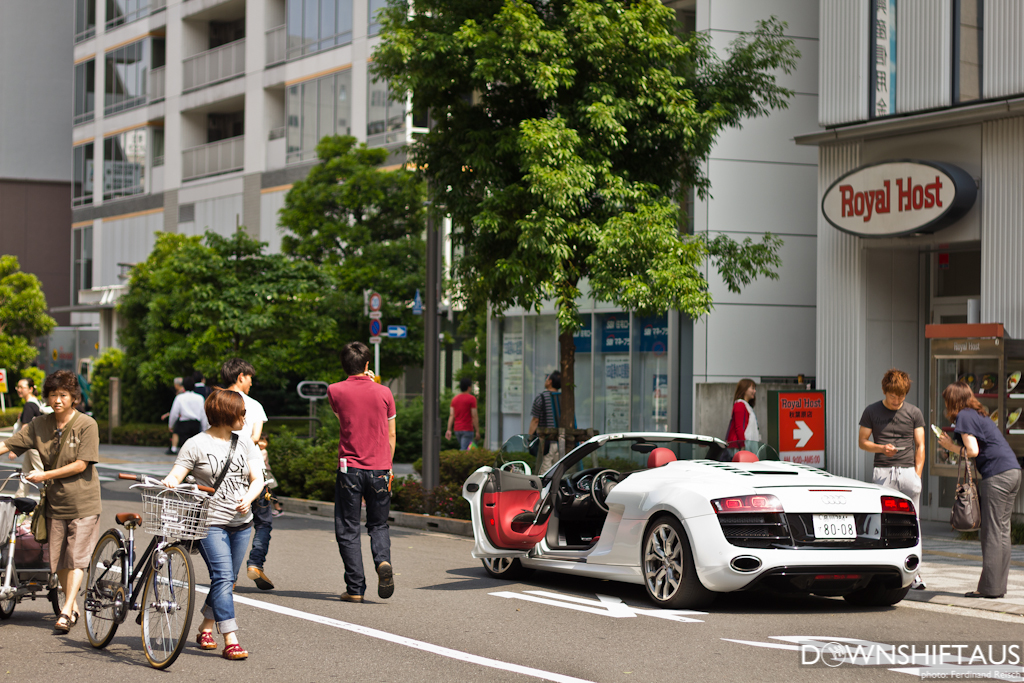

The new M5s from BMW were also very popular! Saw one in every shade.
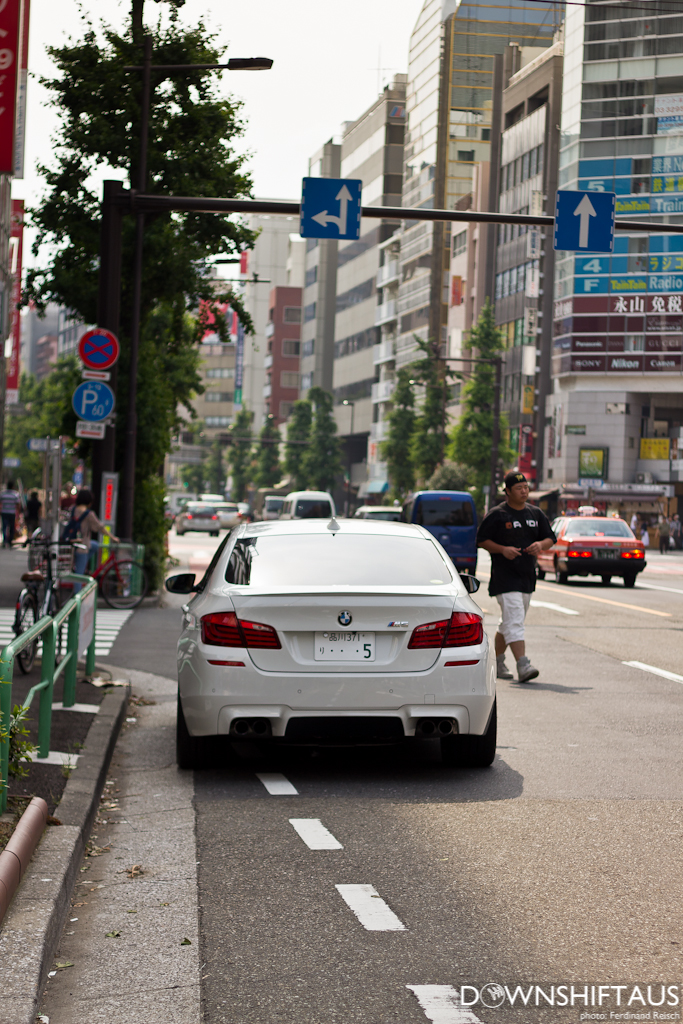
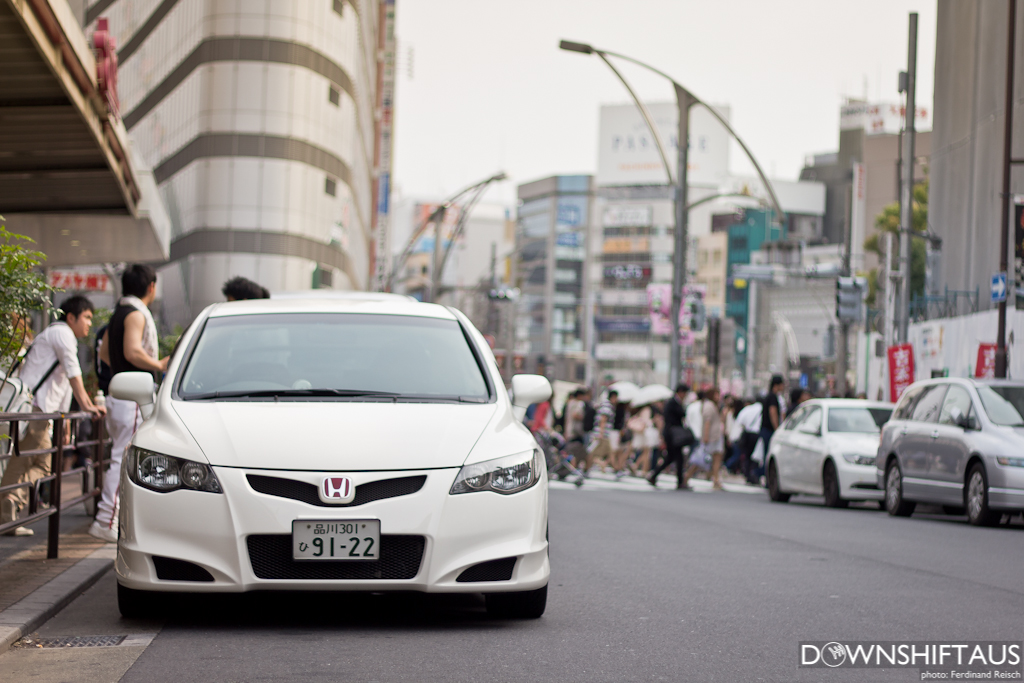
Everytime I board the plane back home from Japan, I am already writing a list of the places and things I need to see next time I return. It is an amazing country, which has so many different aspects. There really is something for everyone.
Finally something typically Japanese, Panda Powah!
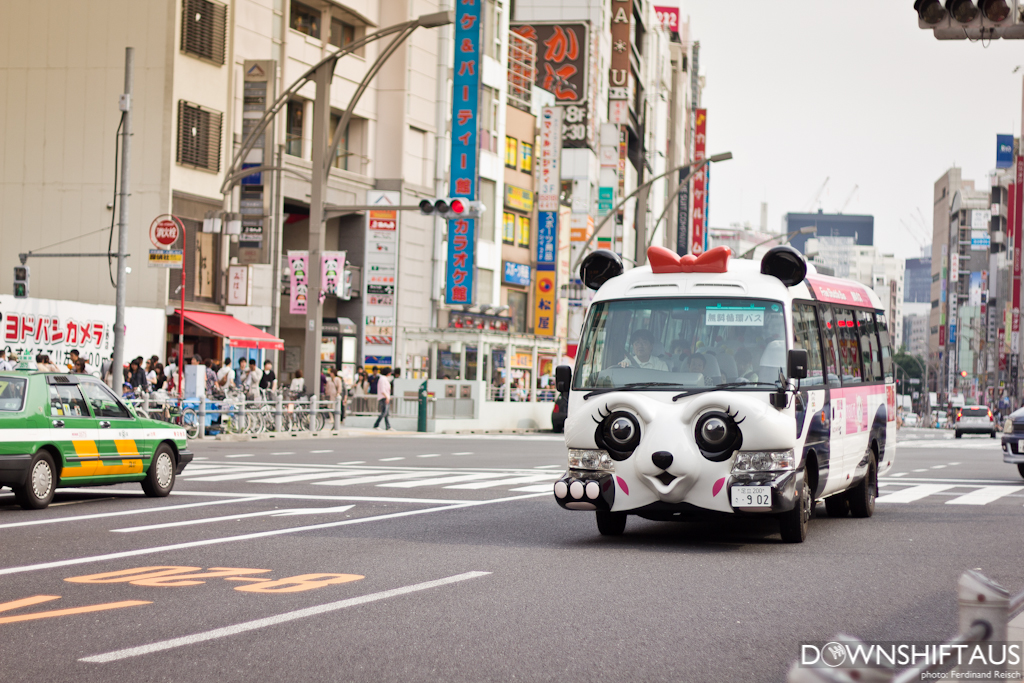
For more images from my trip, check HERE.
[Matyi]: If you liked this stuff, keep your eyes peeled. There’s another Japan story coming from another contributor in the near future.
